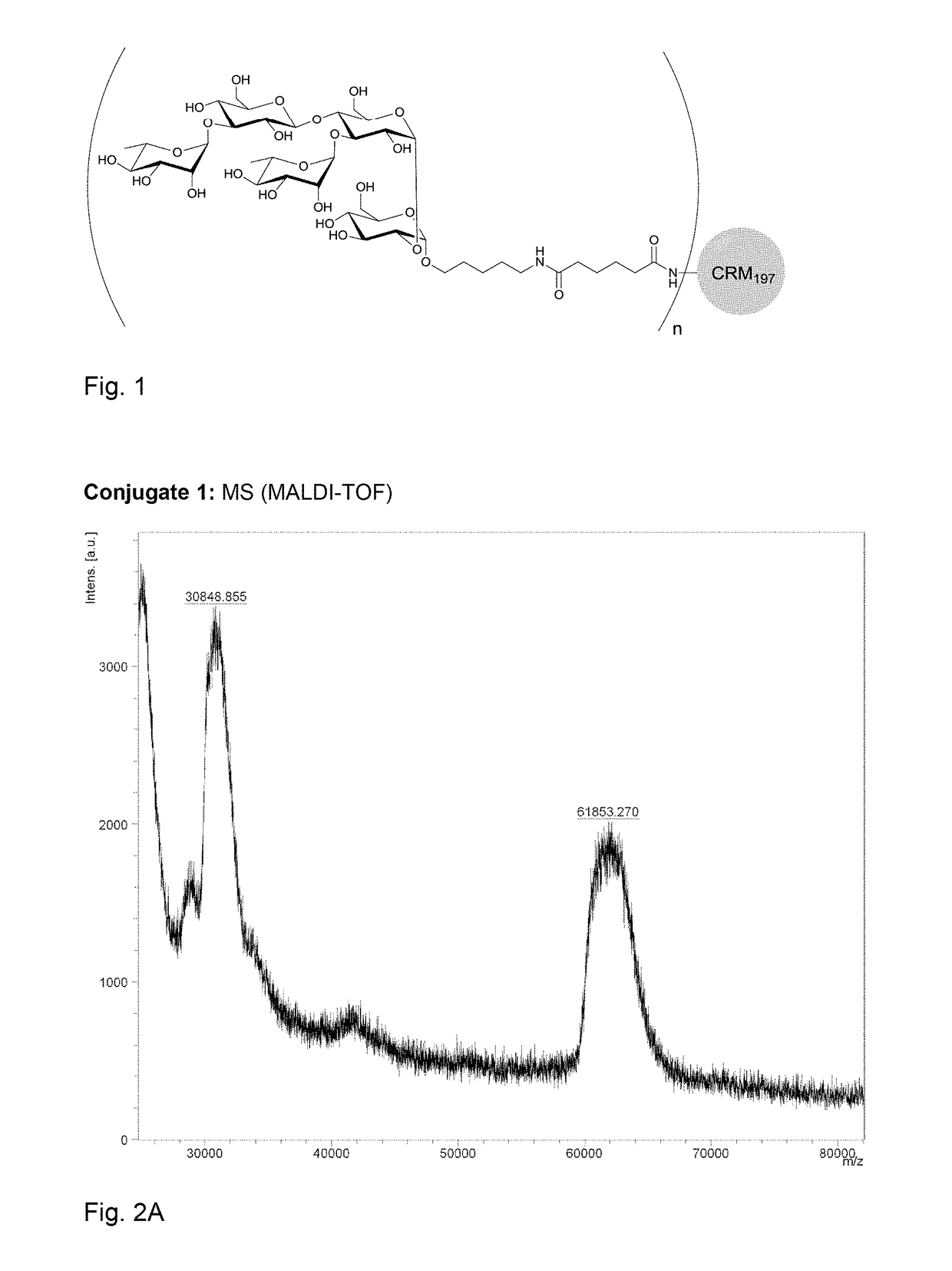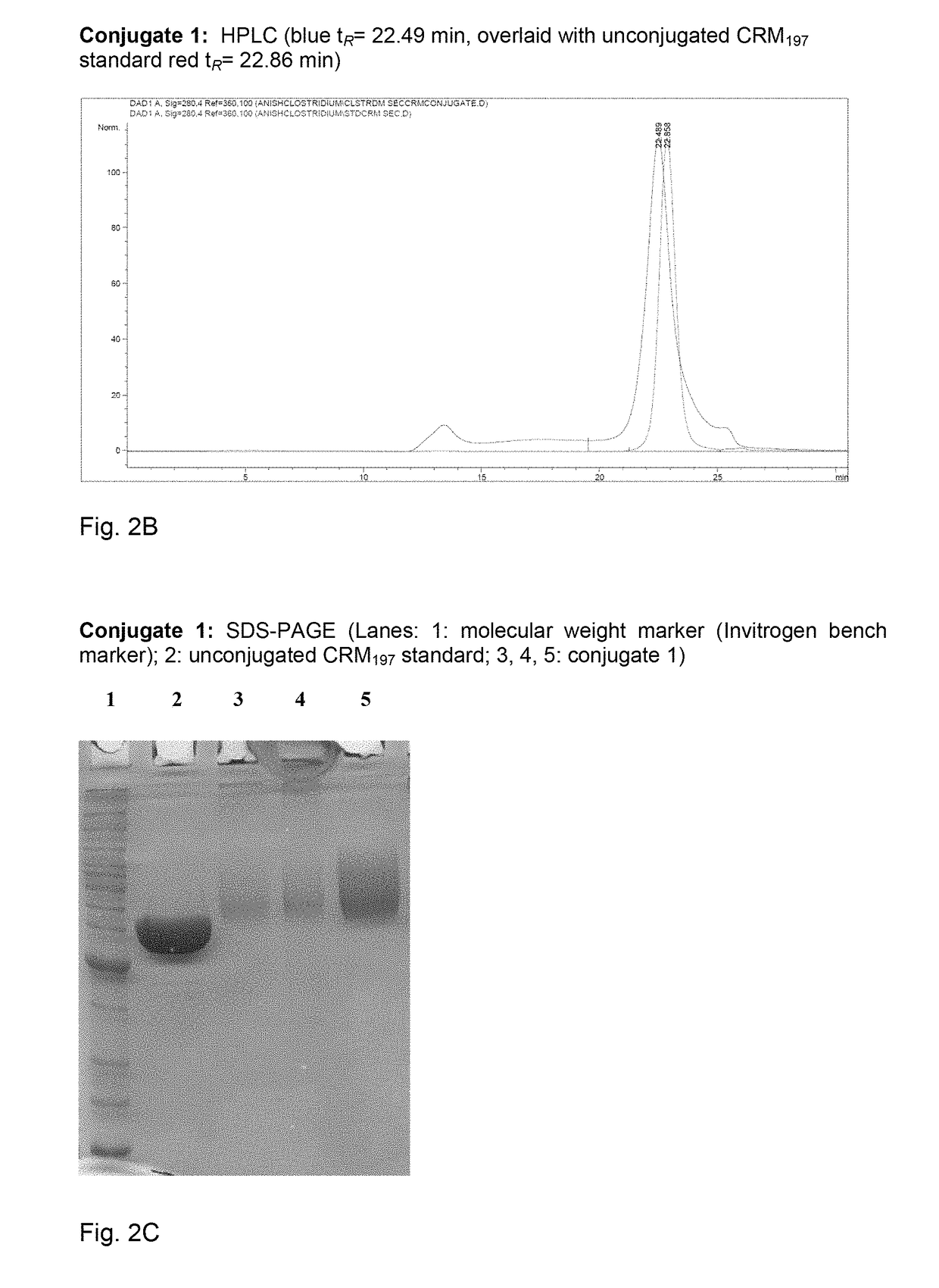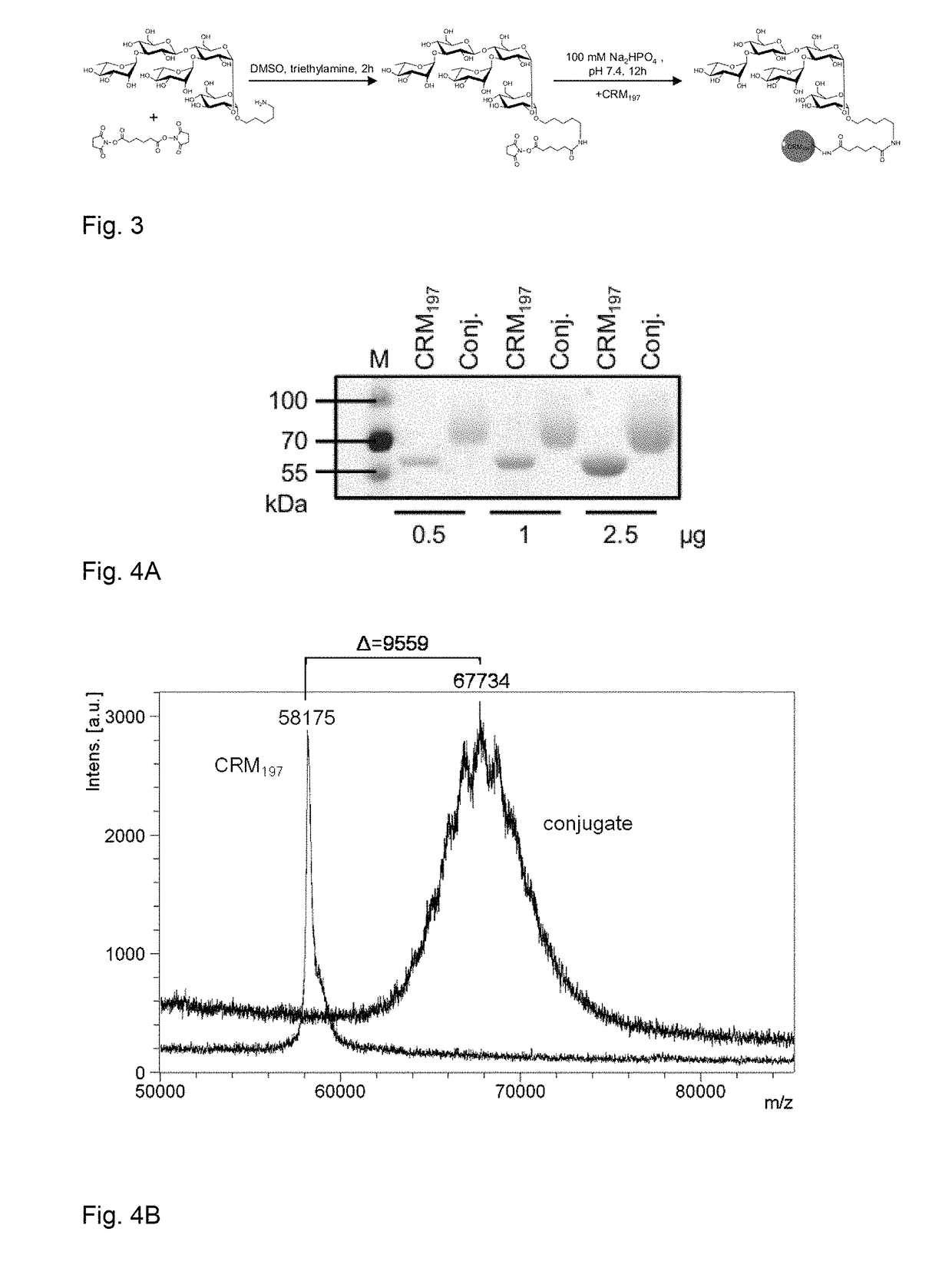Antibodies for prevention and treatment of diseases caused by clostridium difficile
a technology of clostridium difficile and antibodies, which is applied in the field of antibodies for the prevention and treatment of diseases caused by clostridium difficile, can solve the problems of increased morbidity, high mortality and high relapse rate of epidemics, and undeveloped vaccines, and achieves the effect of improving the yield of ps-i pentasaccharide products
- Summary
- Abstract
- Description
- Claims
- Application Information
AI Technical Summary
Benefits of technology
Problems solved by technology
Method used
Image
Examples
example 1
Preparation and Characterization of a Pentasaccharide Based on the Repeating Unit of C. difficile Polysaccharide PS-I
[0115]The pentasaccharide was designed to provide, by means of a linker group, a primary amine at the reducing terminus to facilitate conjugation to a protein carrier and attachment to microarrays and other surfaces. In the following synthesis, the linker comprises the (CH2)5NH2 group and the overall synthesis was performed according to scheme 5 or 8 above as indicated.
General Experimental
[0116]Commercial grade reagents and solvents were used without further purification except as indicated below. All batch reactions conducted under an Ar atmosphere. 1H-NMR and 13C-NMR spectra were measured with a Varian 400-MR or Varian 600 spectrometer. The proton signal of residual, non-deuterated solvent (δ 7.26 ppm for CHCl3; δ 4.79 ppm for H2O, 2.84 ppm for acetone) was used as an internal reference for 1H spectra. For 13C spectra, the chemical shifts are reported relative to th...
example 2
Preparation of PS-1 Substructures
5-Amino-pentanyl D-glucopyranosyl-(1→2)-α-D-glucopyranoside (35)
[0152]A solution of protected disaccharide 33 (40 mg, 31 μmol) in a mixture of MeOH (5.0 ml), THF (2.5 ml) H2O (2.0 ml) and AcOH (0.5 ml) was purged with Ar. After that 10% Pd / C (70 mg) was added and the solution purged with H2 for 30 min, then stirred under an H2 atmosphere for 12 h, filtered and concentrated. The crude product was purified by reversed phase solid phase extraction (RP SPE) (Waters Sep-Pak®, C18) to afford 35 (13.3 mg, 31 μmol, 99%). 1H-NMR (600 MHz, D2O) δ 5.23 (d, J=3.4, 1H, anomeric), 5.16 (d, J=3.6, 1H, anomeric), 4.02-3.80 (m, 8H), 3.75 (app. dd, J=9.9, 3.5, 2H) 3.68-3.61 (m, 2H), 3.53 (app. td, J=9.6, 4.7, 2H), 3.09 (app. t, J=7.5, 2H), 1.81-1.71 (m, 4H, linker), 1.59-1.49 (m, 2H, linker); 13C-NMR (150 MHz, D2O) δ 98.6 (anomeric), 97.9 (anomeric), 77.7, 75.4, 74.5, 74.4, 74.2, 74.0, 72.3, 72.1, 70.4, 63.3, 63.1, 42.1, 30.6, 29.2, 25.1; HRMS (MALDI-TOF): Calcd for C...
example 3
Preparation and Characterization of an Pentasaccharide-Protein Conjugate
[0164]Polysaccharide vaccines provoke exclusively a T-cell independent immune response and do not induce an immunoglobulin class switch. The synthetic repeating unit 1 of the Clostridium difficile glycopolymer PS-I was conjugated to the protein carrier Crm197. The detoxified diphtheria toxoid Crm197 was chosen as a carrier since it is an approved constituent of licensed vaccines (Barocchi et al. (2007), Vaccine 25, 2963-73).
Conjugations
[0165]A) To a solution of di(N-succinimidyl) adipate (5.8 mg, 17 μmol) in DMSO (250 μl) and NEt3 (20 μl) pentasaccharide 1 (500 μg, 0.57 μmol) dissolved in DMSO (250 μl) was added dropwise. The solution was stirred for 2 h, diluted with phosphate buffer (1.0 ml, 100 μm, pH 7.5) and extracted with CHCl3. CRM197 (rDNA) (250 μl, 250 μg, Pfenex Inc (USA)) was added to the aqueous layer and stirred for 5 h. Conjugate 1a was desalted and concentrated. An average load of 3.6 pentasacchar...
PUM
 Login to View More
Login to View More Abstract
Description
Claims
Application Information
 Login to View More
Login to View More - R&D
- Intellectual Property
- Life Sciences
- Materials
- Tech Scout
- Unparalleled Data Quality
- Higher Quality Content
- 60% Fewer Hallucinations
Browse by: Latest US Patents, China's latest patents, Technical Efficacy Thesaurus, Application Domain, Technology Topic, Popular Technical Reports.
© 2025 PatSnap. All rights reserved.Legal|Privacy policy|Modern Slavery Act Transparency Statement|Sitemap|About US| Contact US: help@patsnap.com



